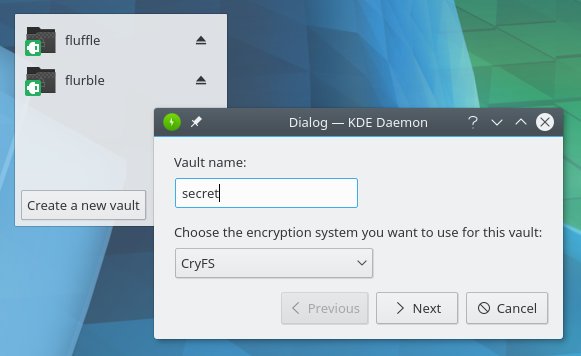The KDE Neon developer edition has a nifty security feature called Plasma Vault — and it sounds awesome.
‘Plasma Vault lets you create encrypted folders in which you can securely stash files you wish to keep private’
Plasma Vault lets you create an encrypted folder in which you can securely stash any files you wish to keep private. This might be your WIP xmas shopping list, candid photos of Bigfoot in fancy swimwear, or work documents of a sensitive nature.
Most modern Linux distributions let you set up an encrypted home folder during installation. This helps ensures that all the documents, files and whatnot you keep in your Home folder are secure-ish by default.
I say ‘ish‘ because, as the developer of this utility Ivan Čukić notes, full partition encryption is a different use-case to that being tackled by Vaults.
“[An encrypted home folder does] not cover the possibility that someone might access your system while it is running. Plasma Vaults fill this void by making the attack surface smaller – instead of having all data unlocked at once, you can do it piece by piece – it is more granular.”
I like the sound of it. Plus you can run Plasma Vaults on top of an encrypted home folder for a more secure combination.
Vault isn’t a new encryption mechanism, but a user-friendly way to use existing encryption backends, neatly integrated into the desktop, and easy to set up using a user-friendly wizard.
At present you can create and manage EncFS, CryFS and Tomb (wrapper for dm-crypt) encrypted directories using Plasma Vault.
You can learn more about Plasma Vault on the developer’s personal blog.
How Well Does It Work?
So how well does it work in practice? That I don’t know.
I destroyed my KDE Neon install a few weeks back and have yet to get another up and running.
But on the basis of this feature I think I’ll opt for the KDE Neon Developer Edition, the bleeding edge version of the non-distro distro, in which this feature is available.
If you’ve already played around with the feature on your desktop do share your experience, thoughts and wants in the comments below. And if anyone knows of something similar for the GNOME desktop, do send a tip to joey [at] ohso [dot] io.

